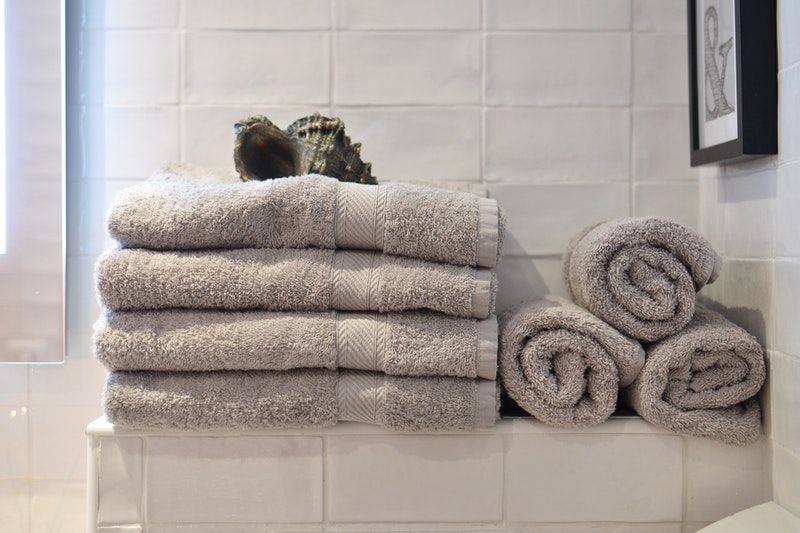If you’re unhappy with your ceramic tiles, you might be feeling like your options are limited. Fortunately, painting over tiles and getting beautiful results is an option. To do this properly, one of the things you’ll need is a quality primer.
With the amount of options, finding a primer that will work on tiles can be overwhelming. This article will help you find the best primer for painting tile floors and walls by covering the following:
- 8 best primers for painting tile floors
- How to pick the right floor tile primer
- Best way to prime ceramic tiles
- Top 7 mistakes to avoid while painting over tiles
Before we get into how to prime your ceramic tiles, let’s dive into some options for tile primers. If you’re renovating your bathroom, check out our guide to the best primers for cabinets.
8 best primers for painting tile floors
There are a lot of primers on the market, but only some will work as a floor tile primer. Here are our recommendations for the best primers for painting ceramic tile.
1. KILZ Adhesion Interior/Exterior Primer
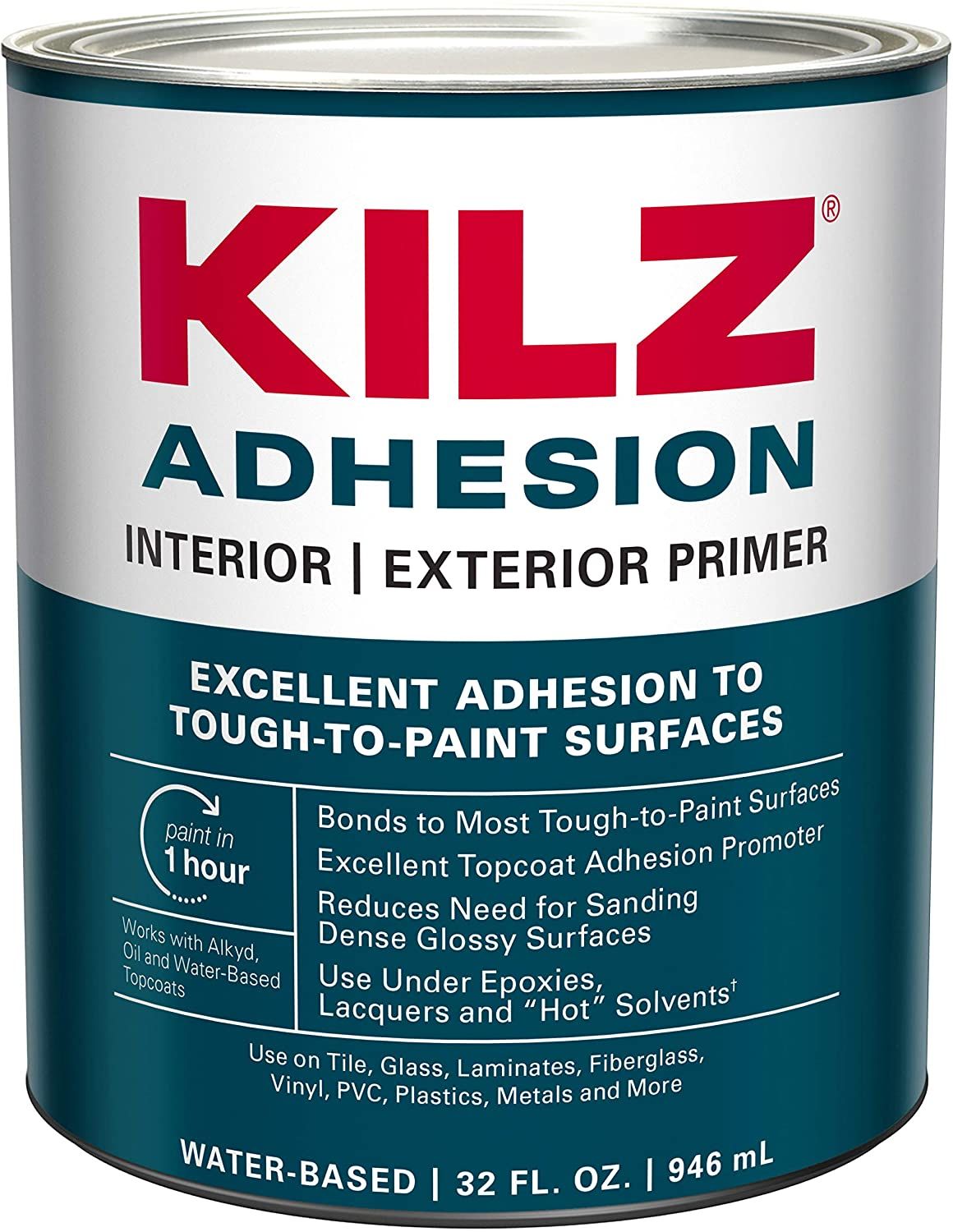
Image credit: Amazon.ca
Size: 946 ml
Coverage: 300-400 sq. ft./gal.
Finish: Flat
Type: Water-based
Best Feature: Versatile
If adhesion is your top concern, KILZ Adhesion Interior/Exterior Primer is your best choice. This approved tile primer is specially made to bond to tough surfaces and allows for a variety of topcoats to be used over it. It can even be used under epoxies and lacquers.
2. Zinsser Bulls Eye 1-2-3 Plus Primer
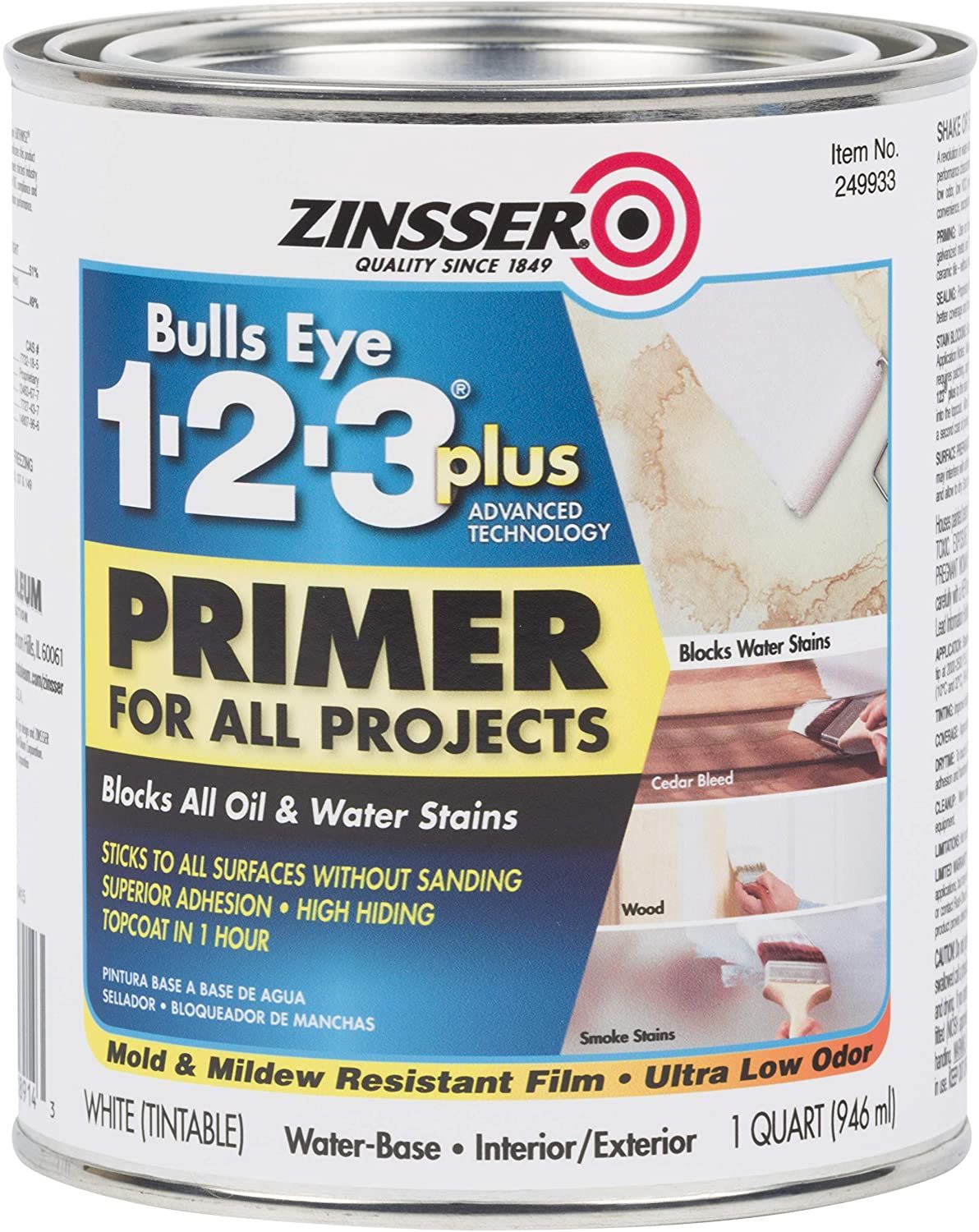
Image credit: Amazon.ca
Size: 946 ml
Coverage: 300-400 sq. ft./gal.
Finish: Flat
Type: Water-based
Best Feature: High hiding
Zinsser Bulls Eye 1-2-3 Plus Primer is an ideal choice for any project, including tile. This primer sticks to almost all surfaces and offers great stain blocking technology. It’s mold and mildew resistant and is ready for a topcoat in an hour.
3. KILZ 2 All-Purpose Interior/Exterior Primer
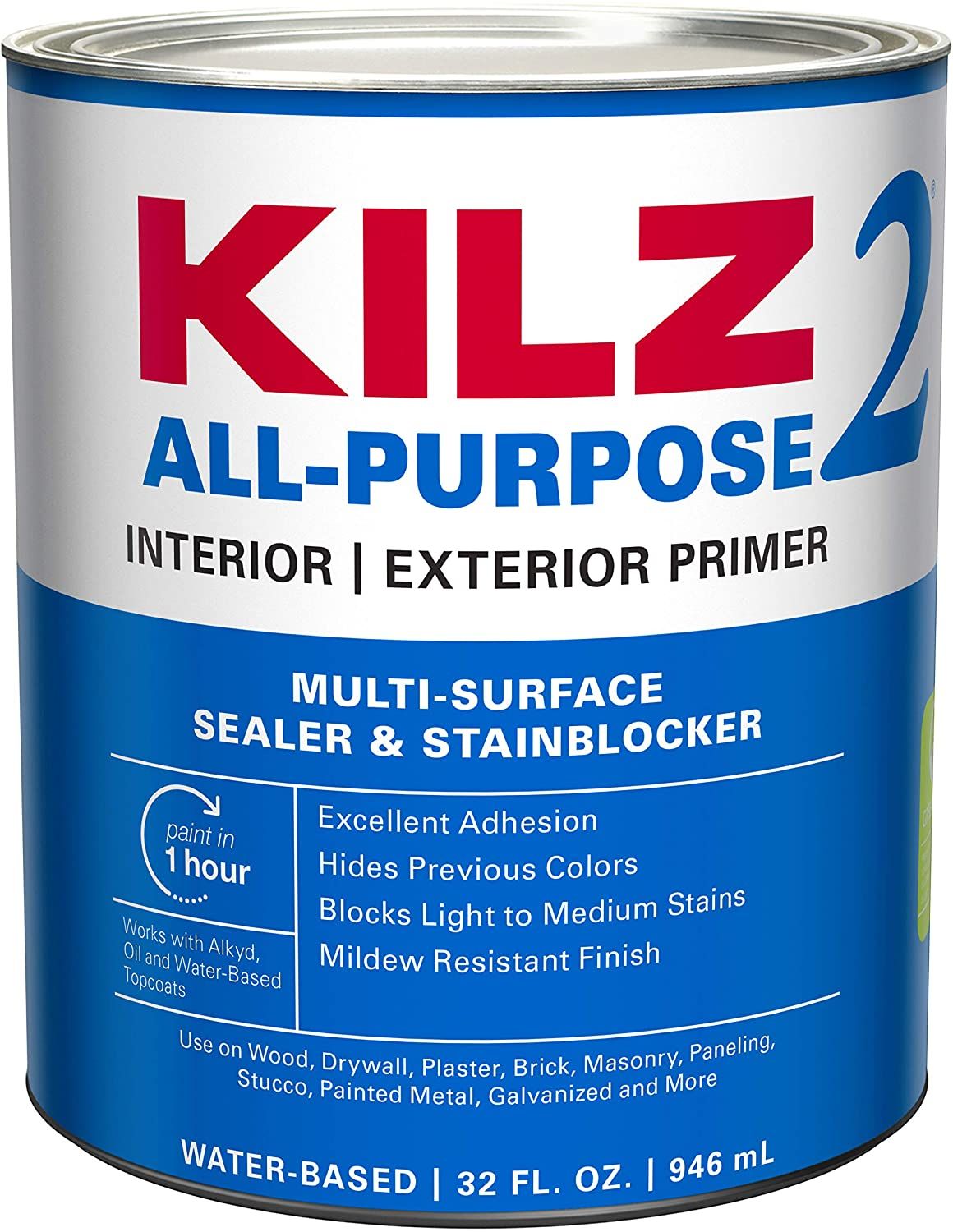
Image credit: Amazon.ca
Size: 946 ml
Coverage: 300-400 sq. ft./gal.
Finish: Flat
Type: Water-based
Best Feature: Blocks stains
If you want a primer that you can’t go wrong with, try KILZ 2 All-Purpose Interior/Exterior Primer. A multi-surface primer, it can be used anywhere to seal the surface and block stains. It’s great at hiding the previous colour and has great adhesion.
4. INSL-X STIX Waterborne Bonding Primer

Image credit: Amazon.ca
Size: 946 ml
Coverage: 300-400 sq. ft./gal.
Finish: Semi-gloss
Type: Urethane acrylic
Best Feature: Strong adhesion
For a popular option for tiles, use INSL-X STIX Waterborne Bonding Primer. This bonding primer for tile is strong enough to coat difficult surfaces and offers great adhesion and sealing qualities. It also works with a variety of topcoats and works in a variety of temperatures.
5. KILZ Restoration Interior Primer

Image credit: Amazon.ca
Size: 1 gallon
Coverage: 300-400 sq. ft./gal.
Finish: Flat
Type: Water-based
Best Feature: Blocks pet odours
Also from KILZ, their Restoration Interior Primer is great for surfaces that have been damaged. Approved as a ceramic tile primer, it’s been designed with the qualities of an oil-based or shellac-based primer, despite being water-based. It also can block difficult stains and odours while being easy to sand.
6. Zinsser Bondz Maximum Adhesion Primer

Image credit: Amazon.ca
Size: 946 ml
Coverage: 300-400 sq. ft./gal.
Finish: Flat
Type: Water-based
Best Feature: Health-conscious
Another great option from Zinsser is their Bondz Maximum Adhesion Primer. This primer offers great adhesion to the most difficult of surfaces and has a low VOC and odour for health-conscious painters. It’s easy to use and can be paired with all paints.
7. KILZ Premium Primer/Sealer/Stainblocker

Image credit: Amazon.ca
Size: 946 ml
Coverage: 300-400 sq. ft./gal.
Finish: Flat
Type: Water-based
Best Feature: Durability
For all your priming needs, opt for KILZ Premium Primer/Sealer/Stainblocker. This 3-in-1 solution bonds well to a variety of surfaces and is super durable. It also has low VOC, making it one of the safest options.
8. XIM UMA Bonder Primer/Sealer
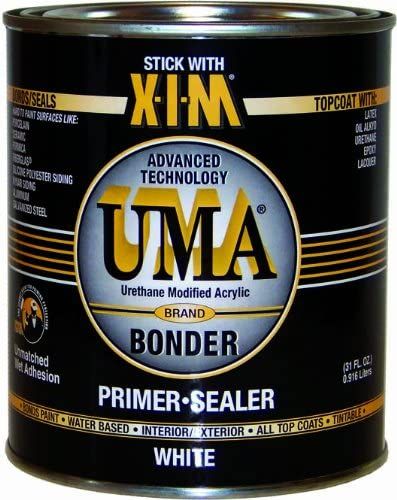
Image credit: Amazon.ca
Size: 946 ml
Coverage: 300-400 sq. ft./gal.
Finish: Flat
Type: Water-based
Best Feature: Versatile
XIM UMA Bonder Primer/Sealer is a great option for tough surfaces, including tile. This primer offers great adhesion and can be used with any topcoat. It offers great coverage and versatile usage.
How to pick the right floor tile primer
With the amount of options available, it can be hard to select a primer that will work best for your tile floors. Follow these guidelines to help you choose the best primer for painting tile in your home.
How to choose the right primer finish
The finish of your primer will determine how reflective your finished project will be, as well as how well it will work with the ceramic surface and your paint. These are your choices for primer finish:
- Clear: Primer that dries clear; used primarily for protection and durability.
- Flat/matte: White or grey in colour with no shine; works with most paints for full coverage.
- Semi-gloss: Somewhat reflective; can enhance the look of your paint.
- Glossy: Shiniest primer; helps achieve a smooth, glossy finish with approved paints.
How to choose the right primer colour
Although it will be under your paint, the colour of your primer will have an effect on the coverage and final look of your paint. Below are the common colour choice you’ll have to choose between for your tiles:
- Clear: Might apply coloured but dries clear as to not interfere with the original and/or new colour.
- White: Most popular choice for full coverage; helps bring out light paint colours.
- Grey: Great for providing full coverage under dark paint colours.
- Neutral: Some primers are available in colours that more closely match your paint.
How to choose the right type of primer
The type of primer you use will determine how effective it is when used on the surface and combined with your paint. Here are the different types of primer you’re likely to encounter:
- Oil-based: Incredibly versatile and stain resistant; can be used in various weather conditions.
- Latex: A quality, health-conscious option; works well with wood, drywall, plaster, masonry, and metal.
- Shellac-based: Works best with interior projects; often dries fast and offers ideal coverage.
- Water-based: A healthier option to the previous three; often versatile.
- Urethane acrylic: Good option for surfaces that pose difficulties with adhesion.
Best way to prime ceramic tiles
Using the right primer is only one part of the process. To get the best results, follow these tips when priming your tiles:
- Protect the surrounding area – Use painter’s tape to protect the edges of your trim, walls, doors, etc. while working with your tiles.
- Clean your tiles – Combine a gallon of water with a half-cup of TSP and scrub the tiles to remove grime, then mop your floors and towel dry to fully clean the surface.
- Sand the surface – Use sandpaper to remove the previous finishes from your tiles and buff up the surface.
- Use a roller – A paint roller will work best to help you distribute the primer evenly and avoid buildup that will show through your paint.
- Apply multiple coats – If needed, apply two or more coats to help you achieve your desired level of coverage.
- Let each coat dry – Allow each coat to fully dry for the primer’s specified amount of time to prevent lifting the primer and creating an unsmooth finish.
- Plan ahead – To avoid damage, create a plan to make sure you have enough time to complete your project, and create a strategy to prevent yourself from walking over or touching your work while it’s drying.
Top 7 mistakes to avoid while painting over tiles
We all make mistakes, but some of the most common ones while working with tiles are easy to avoid. These are the top mistakes to avoid while painting your tiles:
1. Not cleaning beforehand

You might think your tiles are clean, but you need to be sure. Take the time to properly clean your tiles so you can remove any dirt, debris, and grime. Anything left behind can show in your finished results, so it’s better to be safe than sorry.
2. Not sanding before priming
This is another step many like to skip. Sanding is an incredibly important step as it allows you to remove any old materials and create a more adhesive surface. Not sanding could result in some less than flattering results.
3. Not using primer
As tempting as it might be to go straight for the paint, this would be a big mistake. Applying prime first increases the durability of your paint and will help improve the coverage.
4. Using the wrong primer
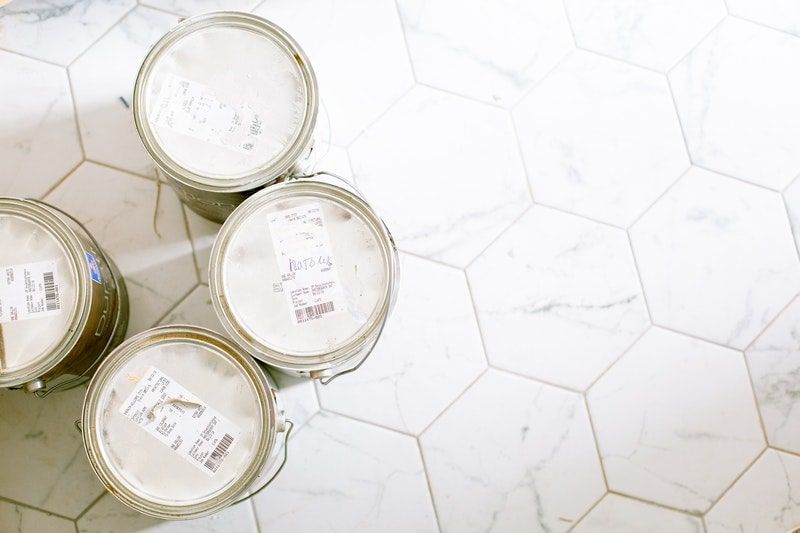
Just as bad as not using a primer is using the wrong primer. Be sure that you’re using a primer that is approved for use on ceramic tiles. Otherwise you’ll encounter issues with adhesion and the overall look of your work.
5. Using an incompatible paint
As much as you might like a paint colour, you also need to be sure it’s approved for ceramic flooring and compatible with your primer. Using an incompatible paint can create poor results and might even be more susceptible to damage over time.
6. Not letting each coat dry
Even if you think you’re ready to apply another coat, you need to wait the proper amount of time. Applying another coat of primer or paint over a coat that hasn’t dried can lift the previous coat and cause buildup and rough patches on your tiles.
7. Not giving yourself enough time
Projects like this are supposed to take a fair amount of time. Be sure to plan accordingly so you and your family will be able to avoid walking on or touching the tiles for the duration of the project. Trying to rush or even skip steps will most likely result in unfavourable results.
Now that you know everything about priming your tiles, it’s time to get started. If you’re feeling unsure and think you might prefer to hire a professional, the City Painters are here to help. Contact us here or give us a call for a free quote.
